We’ve launched the EZ Aero Front Dérailleur Guard on the EZ Gains website, which is quite an exciting time for us.
Used in Ironman Triathlon Pro Field / BTF / ETU / ITU and inspected


It’s generated a lot of interest, including some questions about the testing and legality of it in various event formats, so I thought I’d try to give some more details.
The point of this gadget is twofold. It both helps protect the electronic front dérailleur and connector from the elements (specifically rain), and reduces the drag generated by having a roughly brick shaped box housing the electronics.
The weather protection is a serious issue. For example, recently Ironman 70.3 Ireland was postponed for a day due to a storm. It’s common practise to rack your bike the day before an Ironman (meaning leaving your bike outside dangling from a rail). In this case the competitors had already racked their bikes when the race was postponed, so their bikes had to be left out for 2 nights, including during the storm. On race day, some people’s electronic gears failed due to water ingress (I think this happened to Triathlon Dan).
The aero element is important too, as any time trialist will tell you! The front dérailleur housing is generally not an aerodynamic shape, particularly in Shimano Di2 models. Aerodynamic drag is modelled by a simple equation: front area * drag coefficient. The 3d shape of an item can massively influence the drag coefficient. Unsurprisingly a cube is not aerodynamic with a drag coefficient of 1.04. A teardrop, is very, very aerodynamic with a drag coefficient of 0.04!
Racing Rules
It terms of legality for racing, there are various rules for different racing associations, and most require some interpretation. This gadget is aimed at time trial bikes, so I’m focusing on events where you might use one.
British Triathlon and World Triathlon only do not allow fairings for Elite, U23, Junior and Youth draft legal racing, or para triathlon cycling. They are legal for age group racing, either draft legal or non drafting.
British Cycling Time Trial Association
- (h) The use of recumbent machines, protective shields or windbreaks is prohibited.
I believe this to refer to this kind of shield or windbreak:

And really to avoid this kind of “bike”:
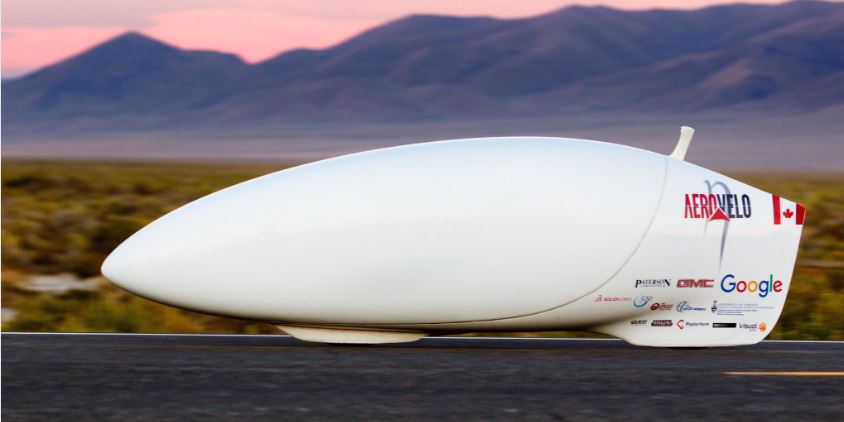
If it did refer to minor additions to the frame to adjust the aerodynamics, such as taping over bolt holes, I don’t think I’ve seen many bikes at time trials that would pass this rule. My bike (a Boardman TTE) comes with a screw on protective piece of plastic which covers the area in the frame where the Di2 junction box resides – this seems very similar and there is no way I’d race without that on, or be expected to! This type of bike used to be regularly ridden at UCI events without issue.


The EZ Aero Front Dérailleur Guard is bolted onto the frame in a similar manner for similar purposes.

The next picture is a Canyon Speed Max used in Kona Ironman 2023 which has passed all inspections and is using a single purpose bolted on front fairing, which again you can argue its part of the bar system, the same as a aero water bottle system and the dual purpose front derailleur guard.
Similar to this the CTTA rules are the Ironman rules:
5.03 (b) Fairings are prohibited. Any device added or blended into the structure that may decrease, or that has the effect of decreasing, resistance to air penetration, or that may artificially accelerate propulsion, such as a protective screen, fuselage form fairing or the like, is prohibited.
The interpretation of this seems to be very relaxed. Probably because as if you got rid of any device which has the effect of reducing resistance you’d not be allowed aerodynamic bike computers or lights. Let alone Ceramic Speed’s OPSW aero rear dérailleur, which we’ve seen on Pro’s bikes at the World Championships. There is an argument that it’s a structural part of the rear dérailleur, but this rule doesn’t specify anything about that.
USA Triathlon has this rule:
5.11 (e) There must be no protective shield, fairing, or other device on any part of the bicycle (including frame, wheels, handlebars, chain wheel, and accessories) which has the effect of reducing resistance.
Note there is an exception for wheel covers on the rear wheel.
Again, the interpretation of this seems to be relaxed; see the point about aerodynamic bike computers or lights.
It also has this rule:
(f) No additional equipment, whether it is worn under the competitor’s clothing, over the competitors clothing, or is otherwise attached to the athlete’s body, which has the effect of reducing wind resistance is permitted.
But I think you still see people with bottles placed under their tops etc.
UCI Time Trials
The UCI does not take a relaxed interpretation of its rules. I would not recommend attempting to use this item at a UCI event. I’d expect most people taking these seriously are running a single front chainring anyway.
Aerodynamic Testing
We tested this at the Silverstone Sports Engineering Hub wind-tunnel, with an independent engineer present running the tunnel. I was riding for the testing of the dérailleur guard.

The testing was done over a range of yaw angles and at different speeds. We were testing several potential products, which included items on the front wheel (which disappointingly didn’t reduce drag), which meant that the wheels had to be rotating at the correct speed for each wind speed. The upshot of that was that I was pedalling at a realistic cadence for each wind speed.
On a personal note, since we were testing several items, suits and helmets, with each test having just a single incremental change, the tests involving the dérailleur guard really weren’t my best drag numbers. So please don’t roast me for that!
The incremental changes for the dérailleur guard produced pretty impressive reduced drag. However, not the nice round headline numbers stated on the launch, and we can only apologise for that.
I’m not sure where those came from. There is always some data lost reducing a complex set of numbers across different axes into something simple, but these were just wrong. I expect it was some miscommunication or mistake comparing against more than one incremental change. However, it’s an honest mistake, and in the interest of transparency and not wanting to mislead anyone, this is the raw data from the test of the dérailleur guard, and still show a VERY useful drag reduction.
Screen shots here come from the Silverstone Sports Engineering Hub‘s website which does some nice graphics and conversions – we do have the raw data but showing shots direct from the website avoids any worry about data conversion errors.
Here’s the cda numbers. Top line is the wind speed in kmph. Second is the yaw angle (wind direction). The next line is the first test with the dérailleur guard on, and the last is without it, meaning any increases to the watts or cda is a decrease with the dérailleur guard on.
The change in cda is shown in brackets. Negative yaw angles are from the chainring side of the bike.


Here’s the same shown as power in watts.



If you want a headline simple set of data to take, here’s the power saved with a straight on wind (0 degrees yaw): 1.4 watts at 30 kmph, 4.1 at kmph and 5.8 at 50kpmh
The graphs of power required show the performance graphically and are easier to get visualization at different yaws. The airspeed is in meters per second: 8.3mps is 30kmph, 11.1 is 40 and 13.9 is 50.
Light blue is without the guard, dark with it.


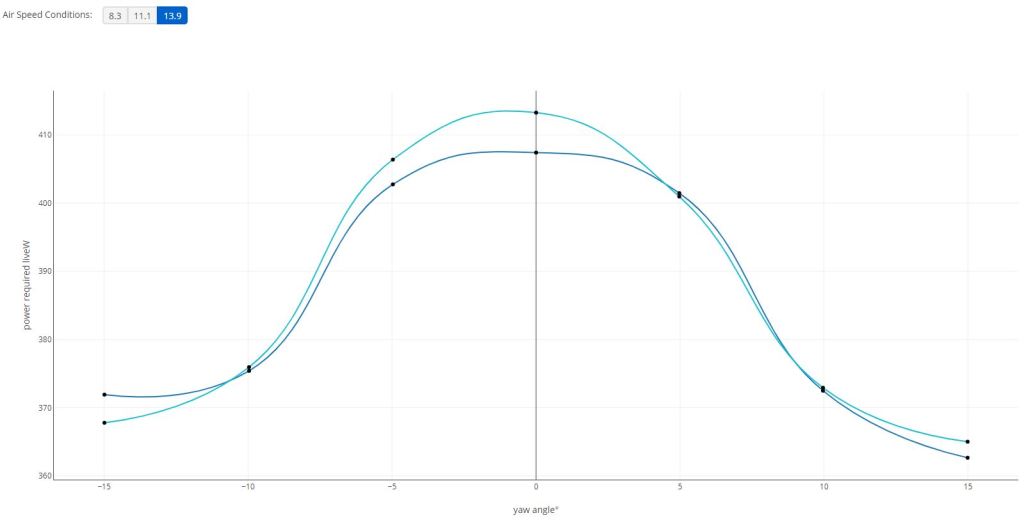
You can see that with the wind straight on and from the chainring side, the results are generally better (which is to be expected as the airflow is shielded by the frame from the other side).
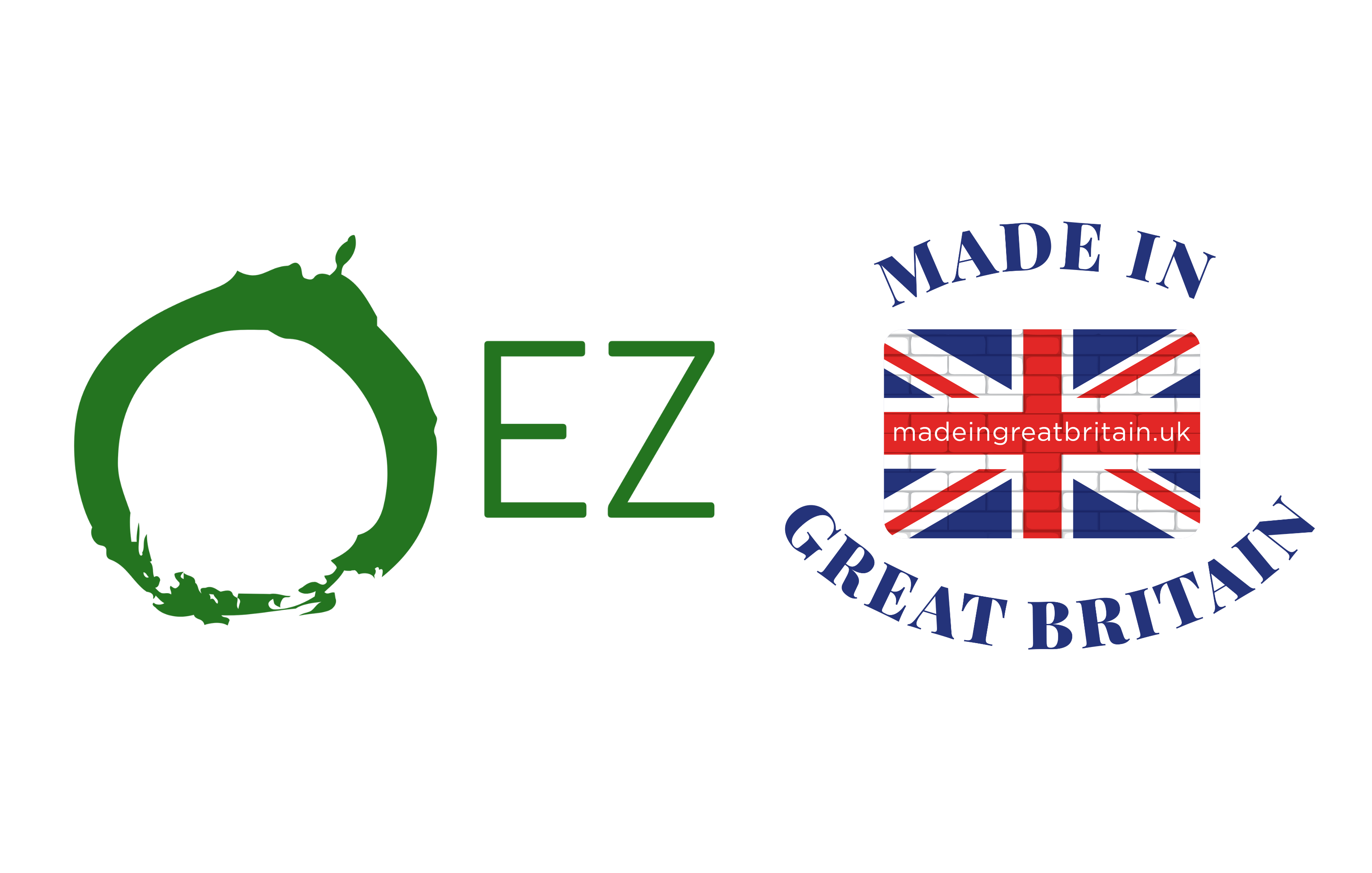

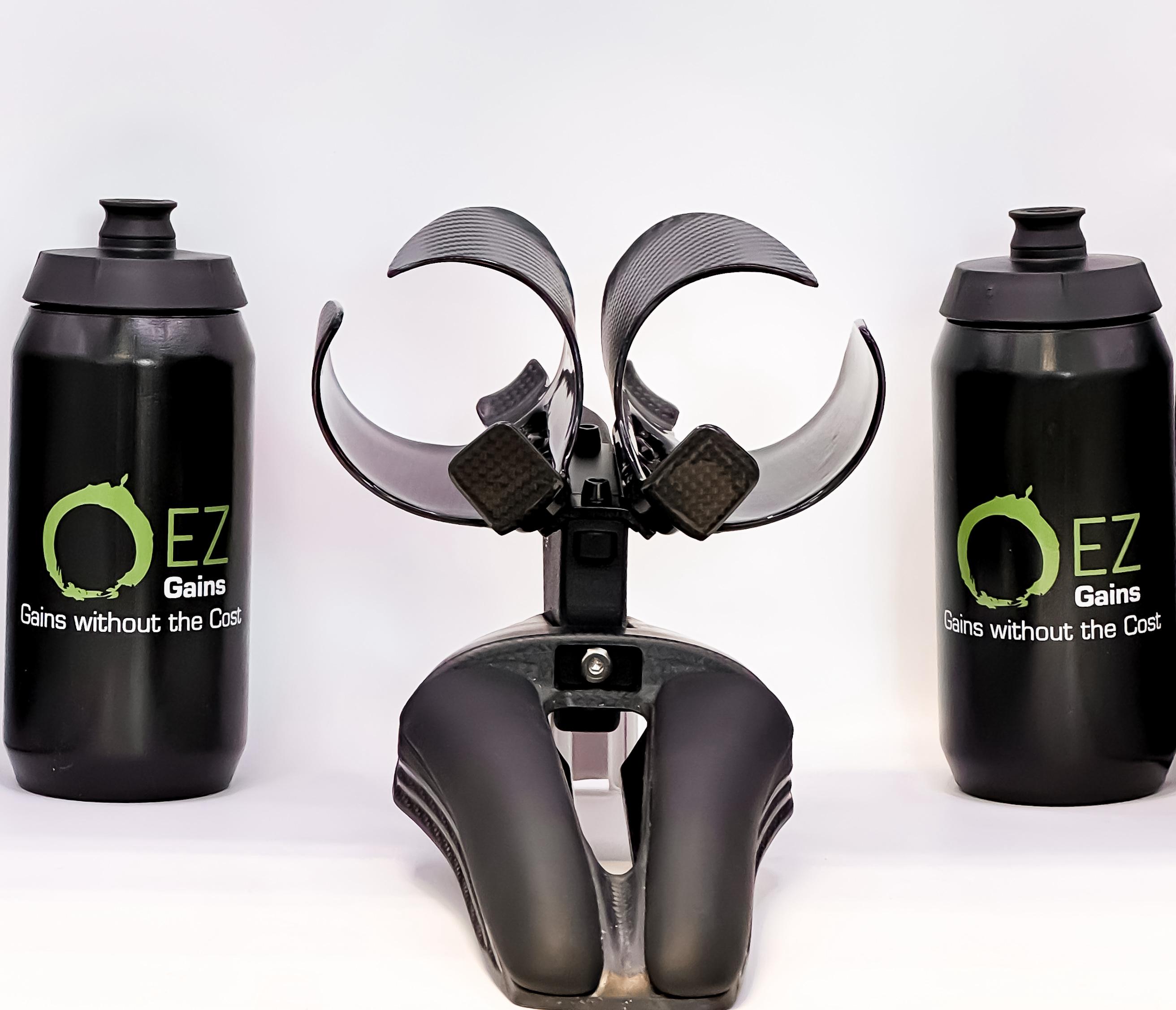
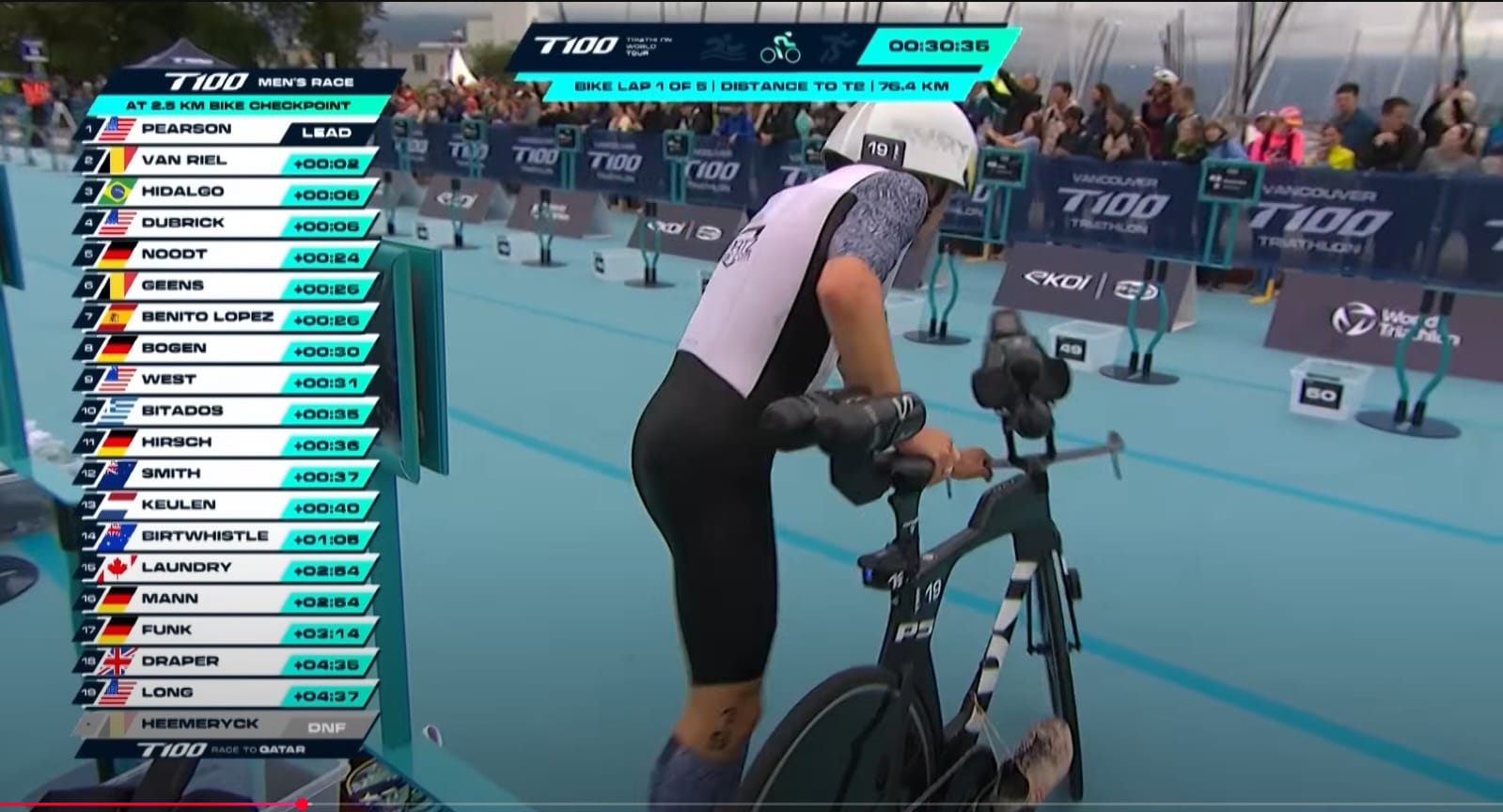
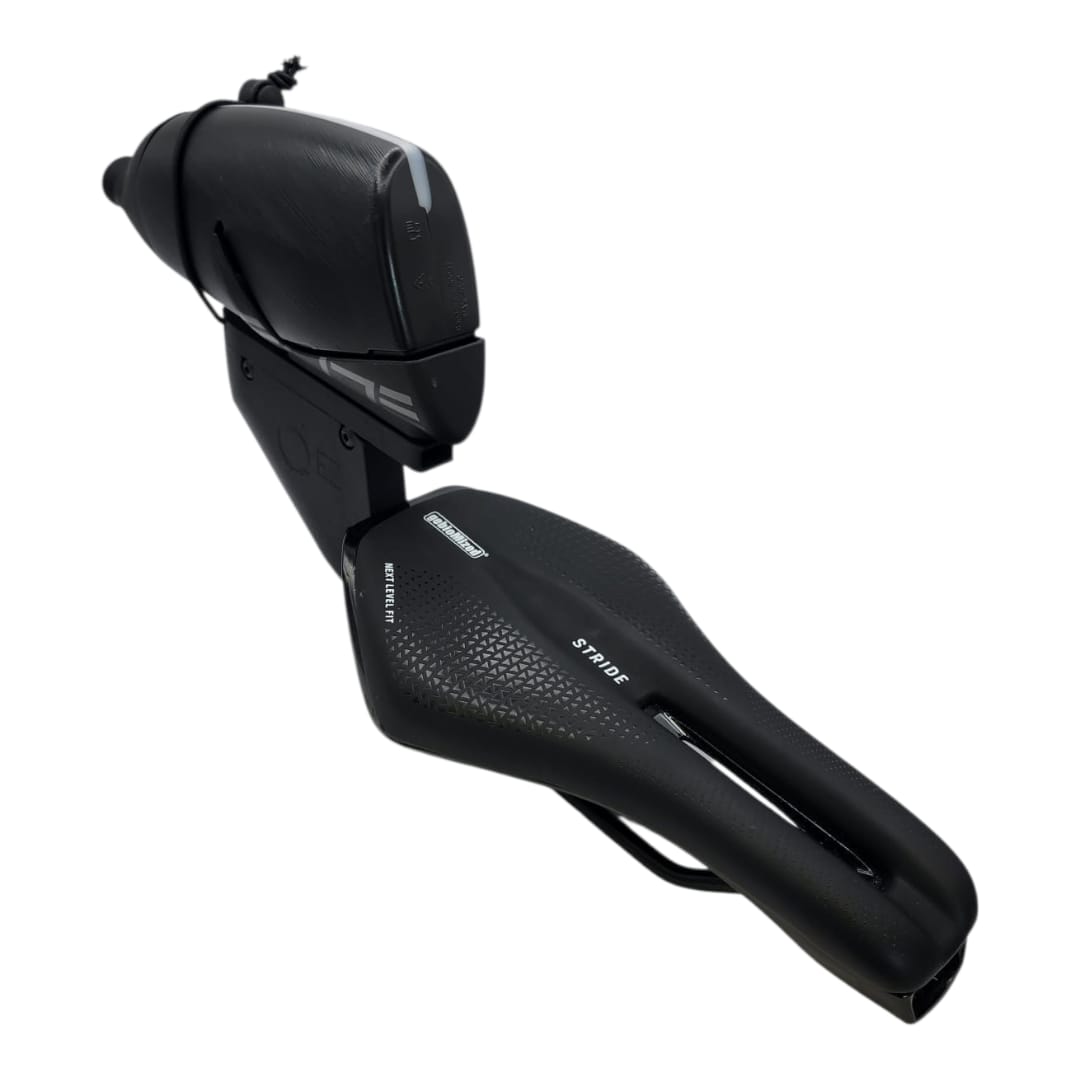
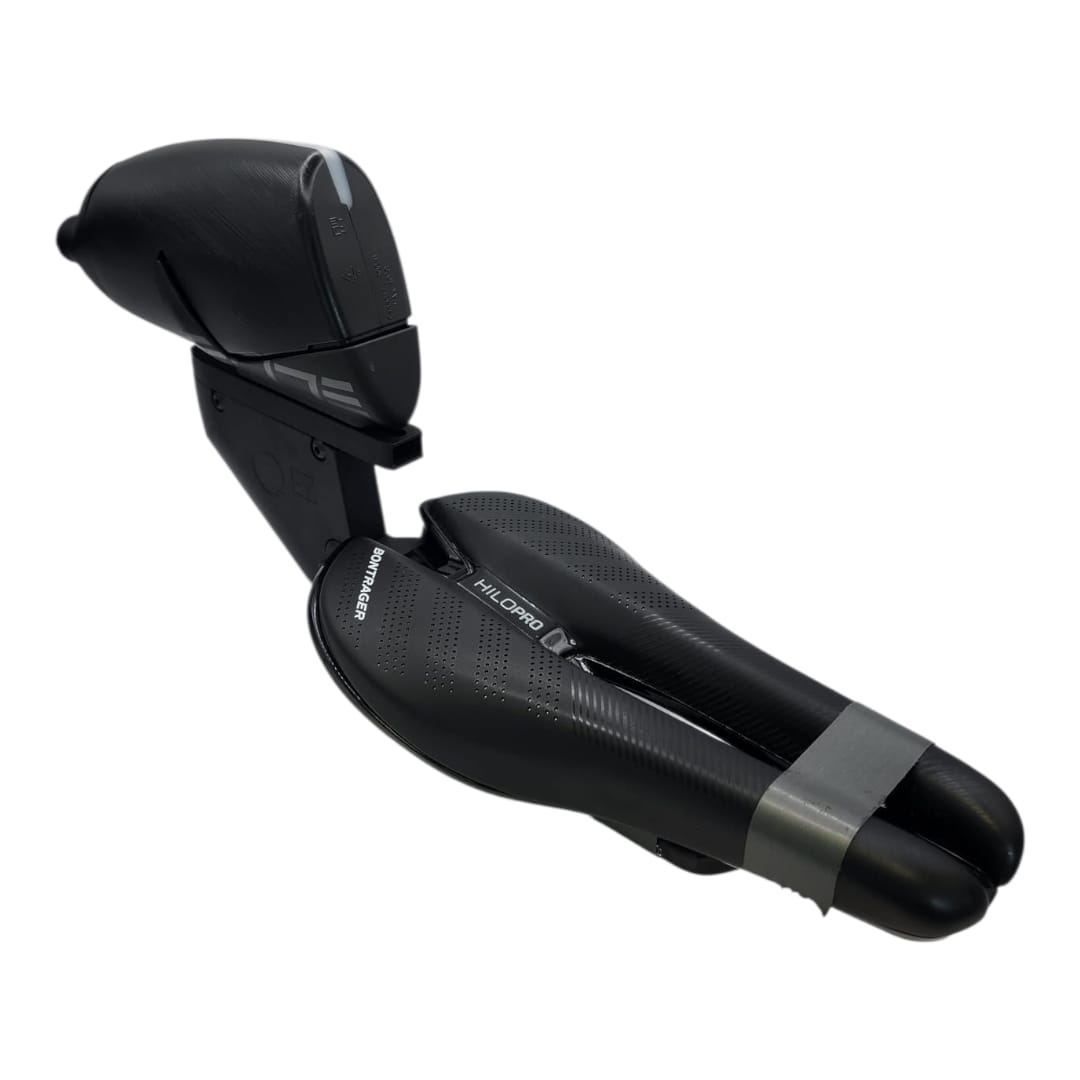

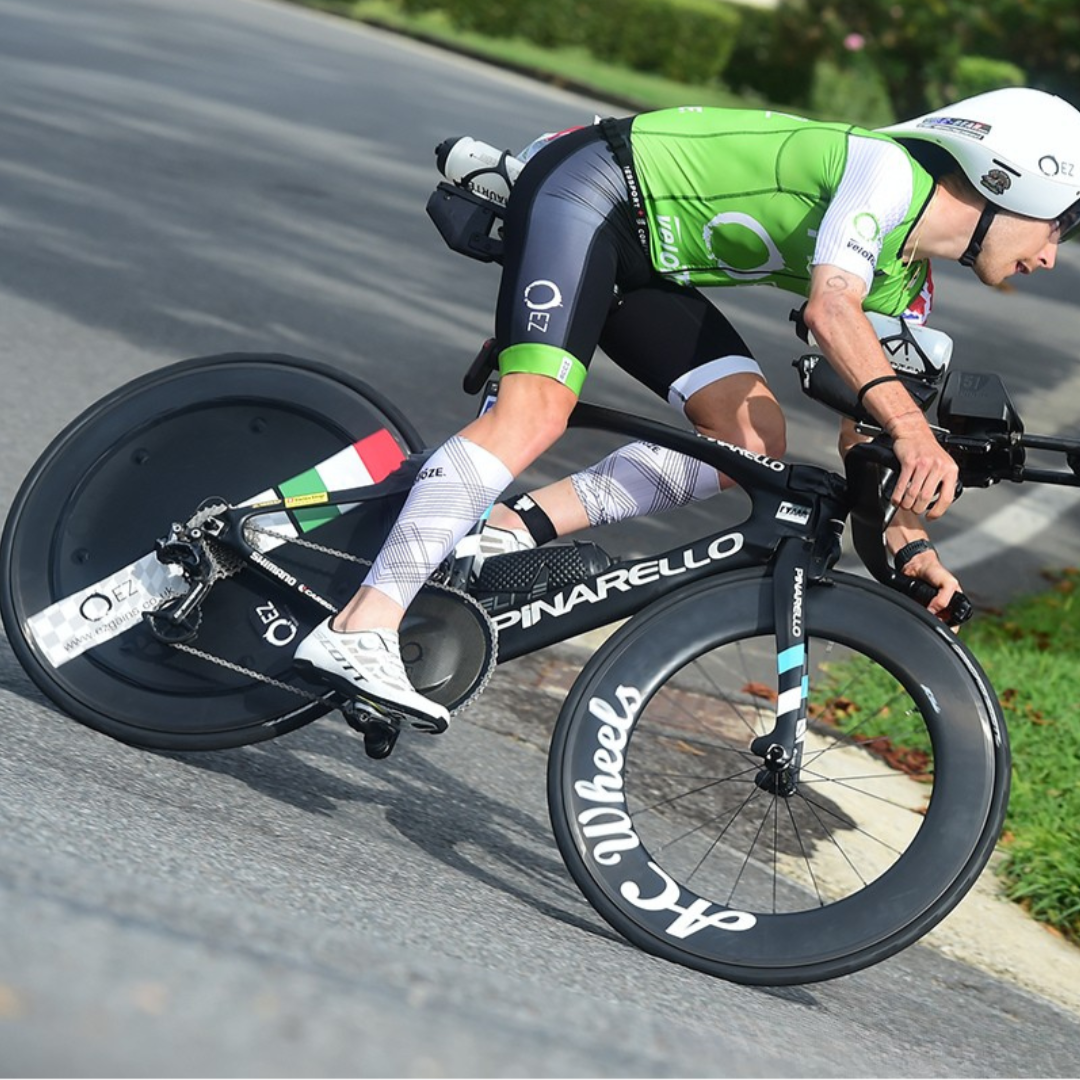
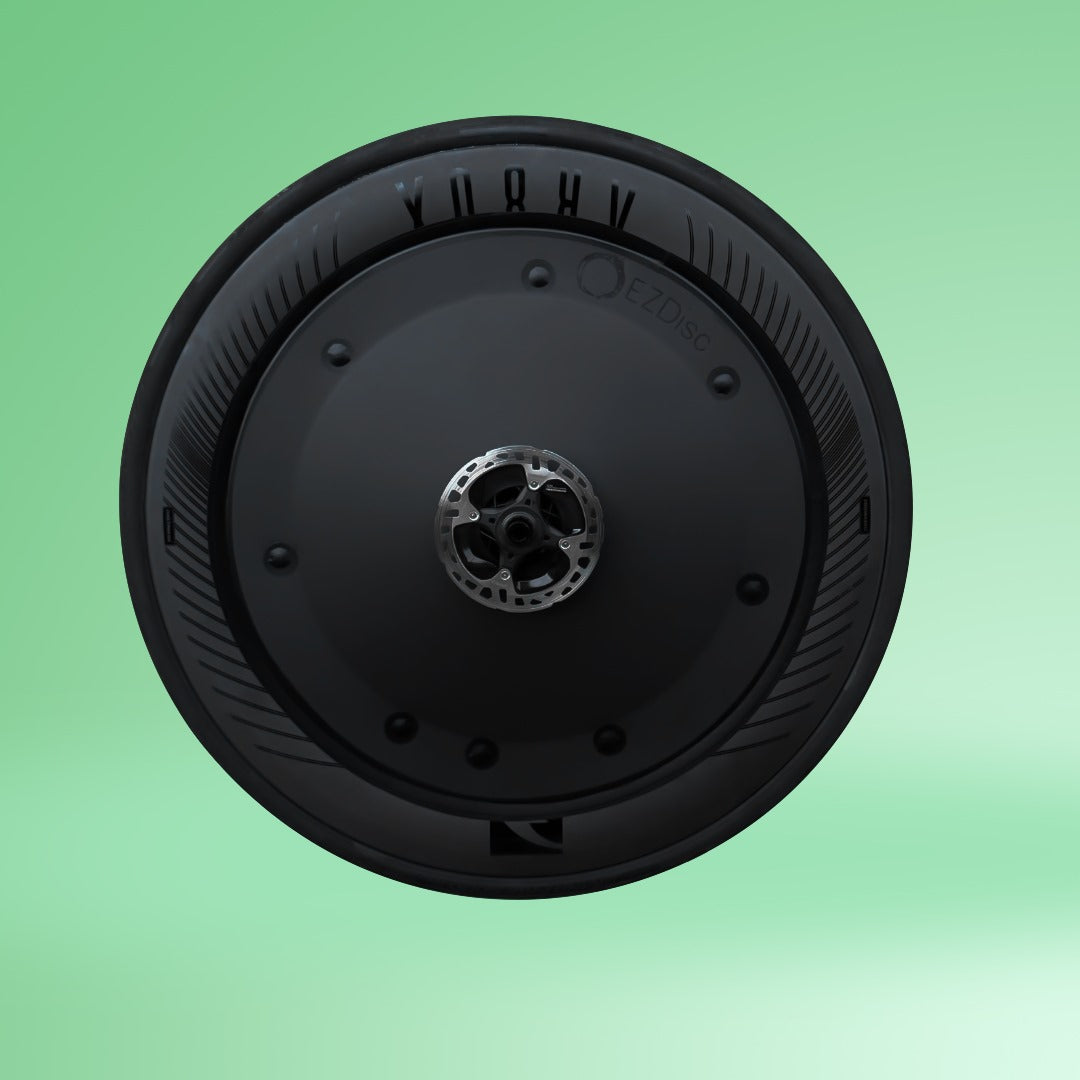

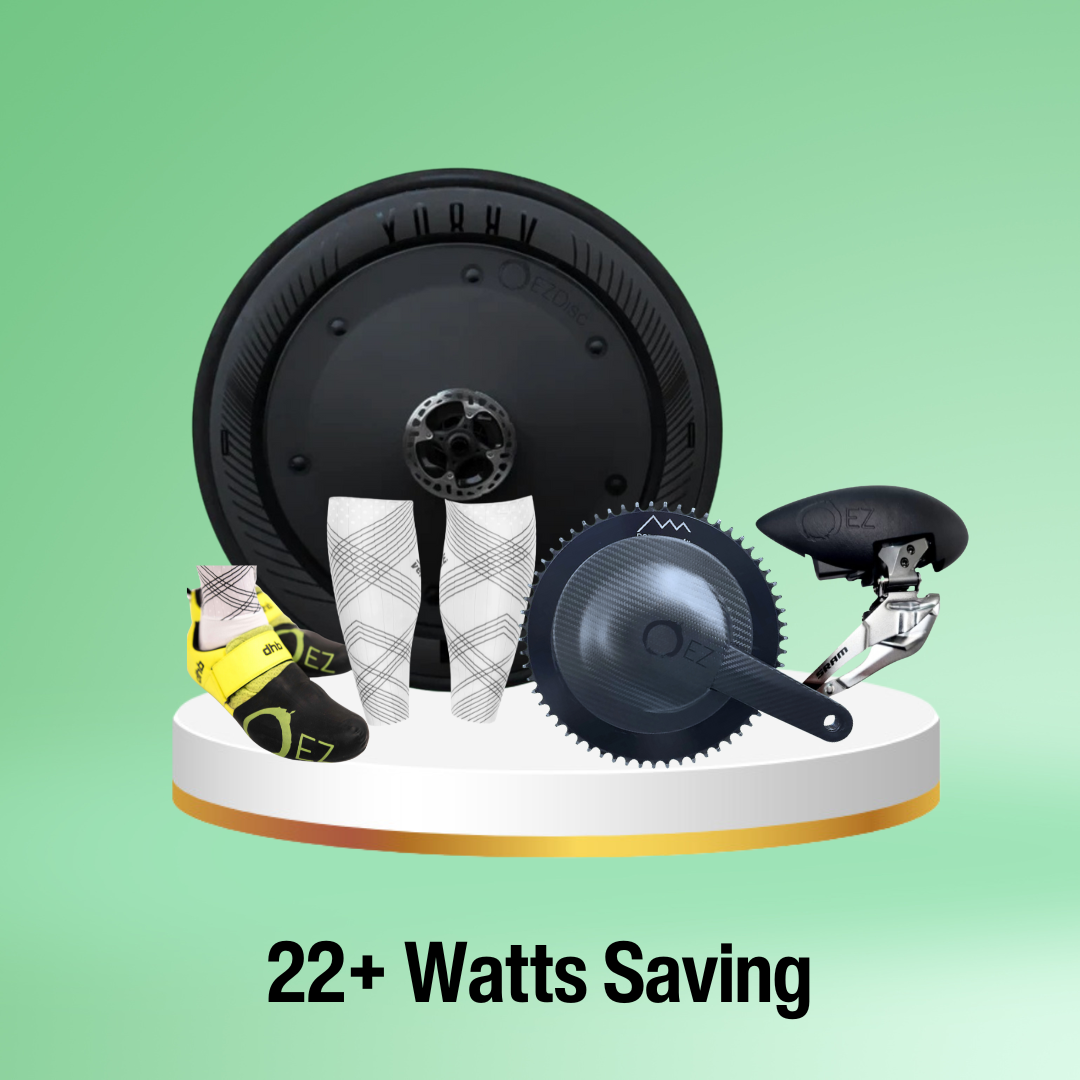
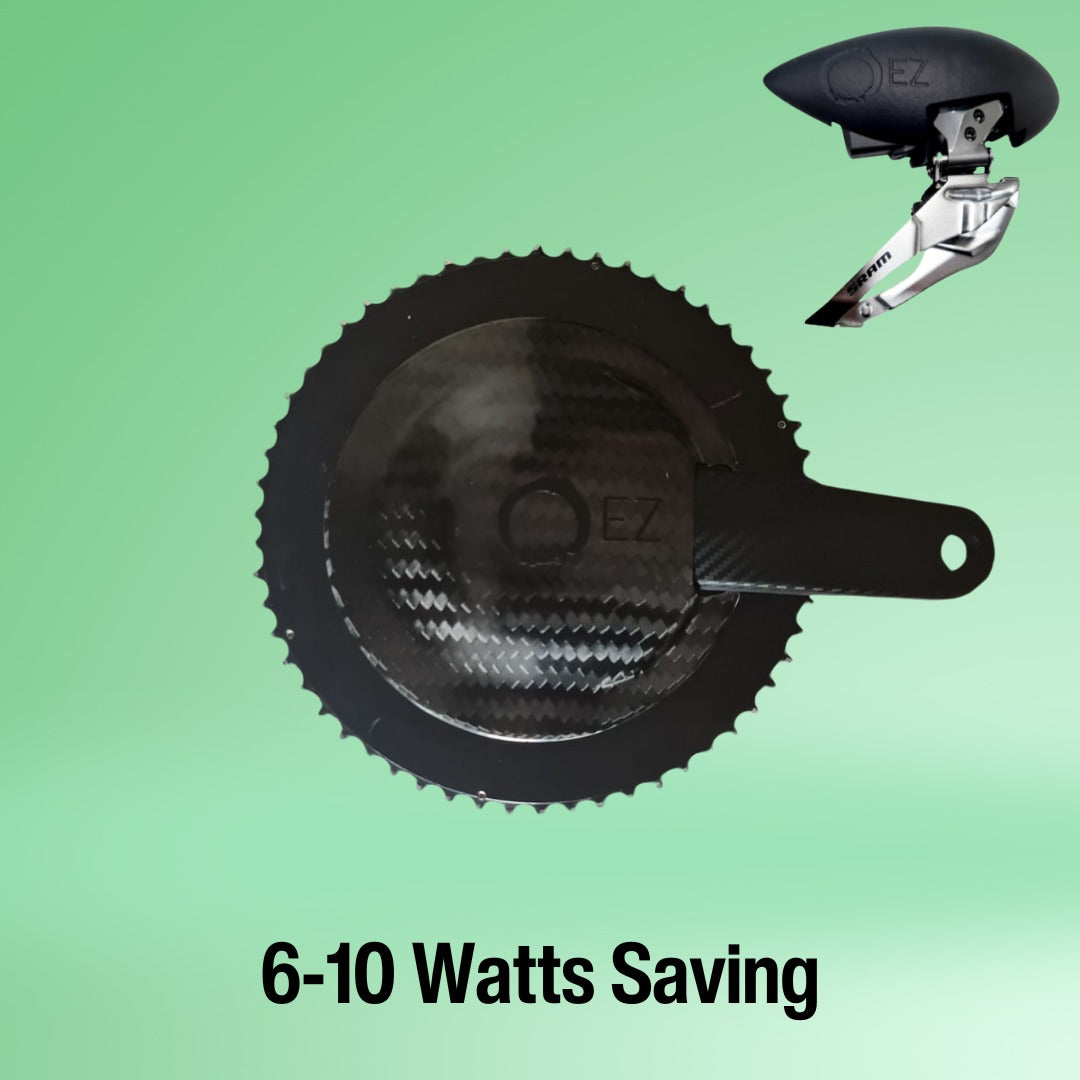

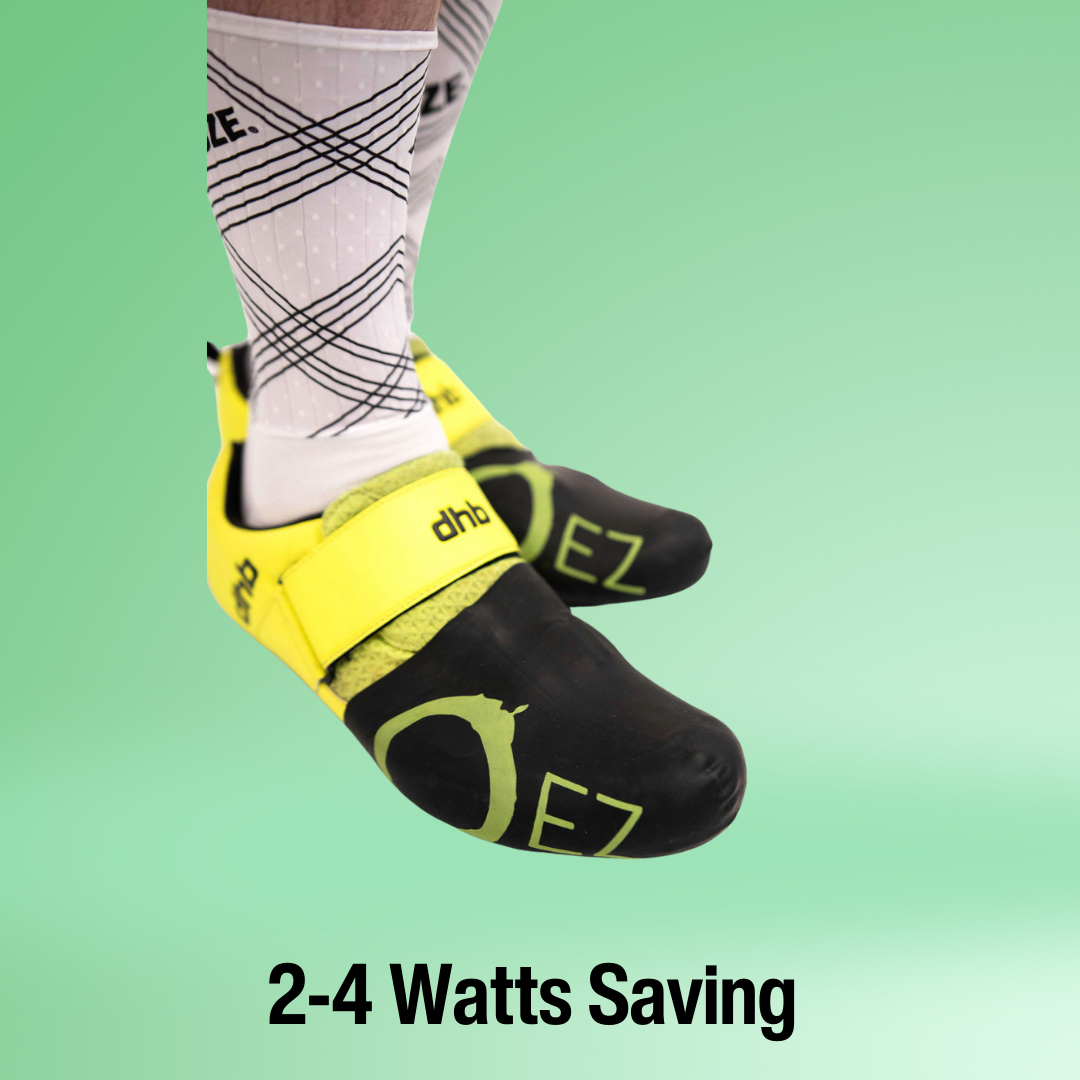

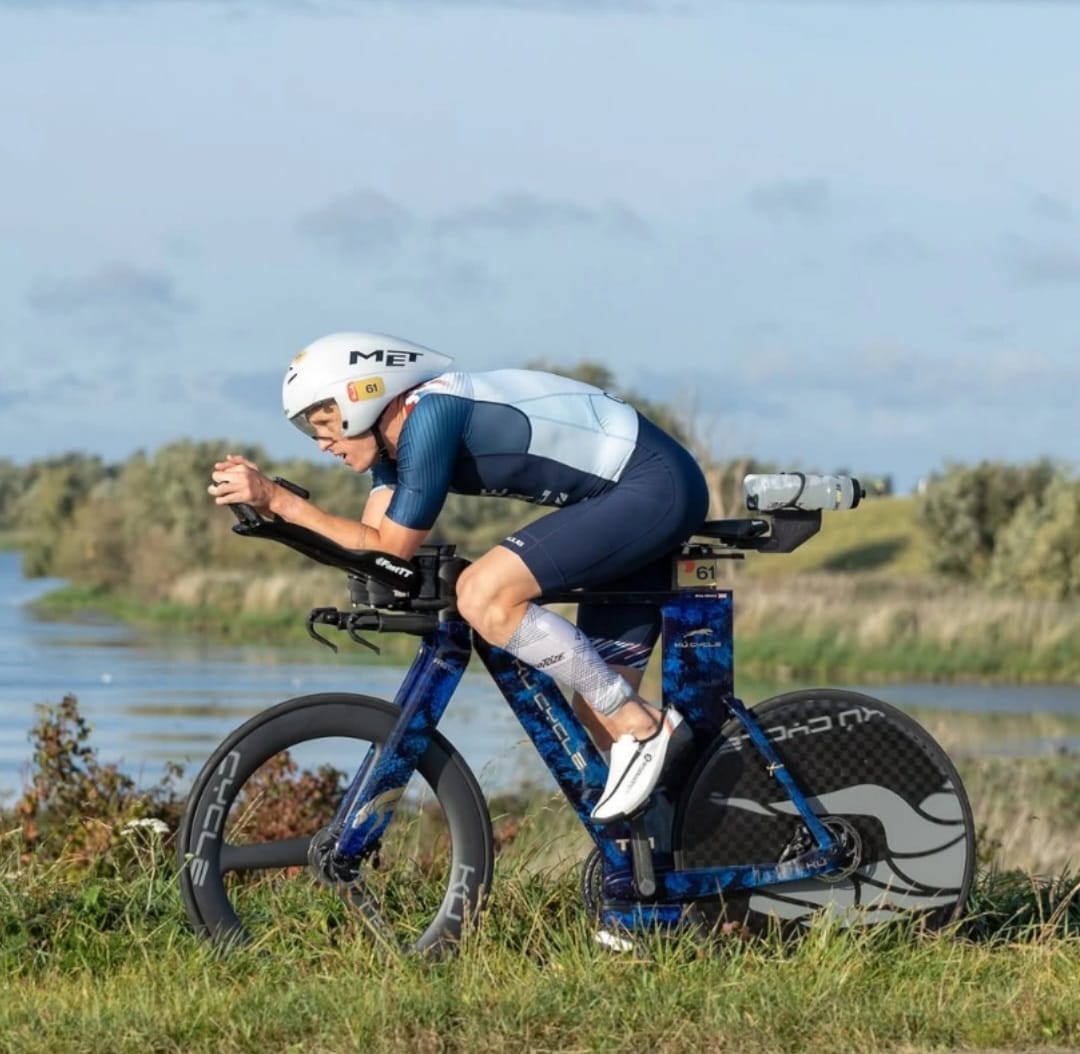
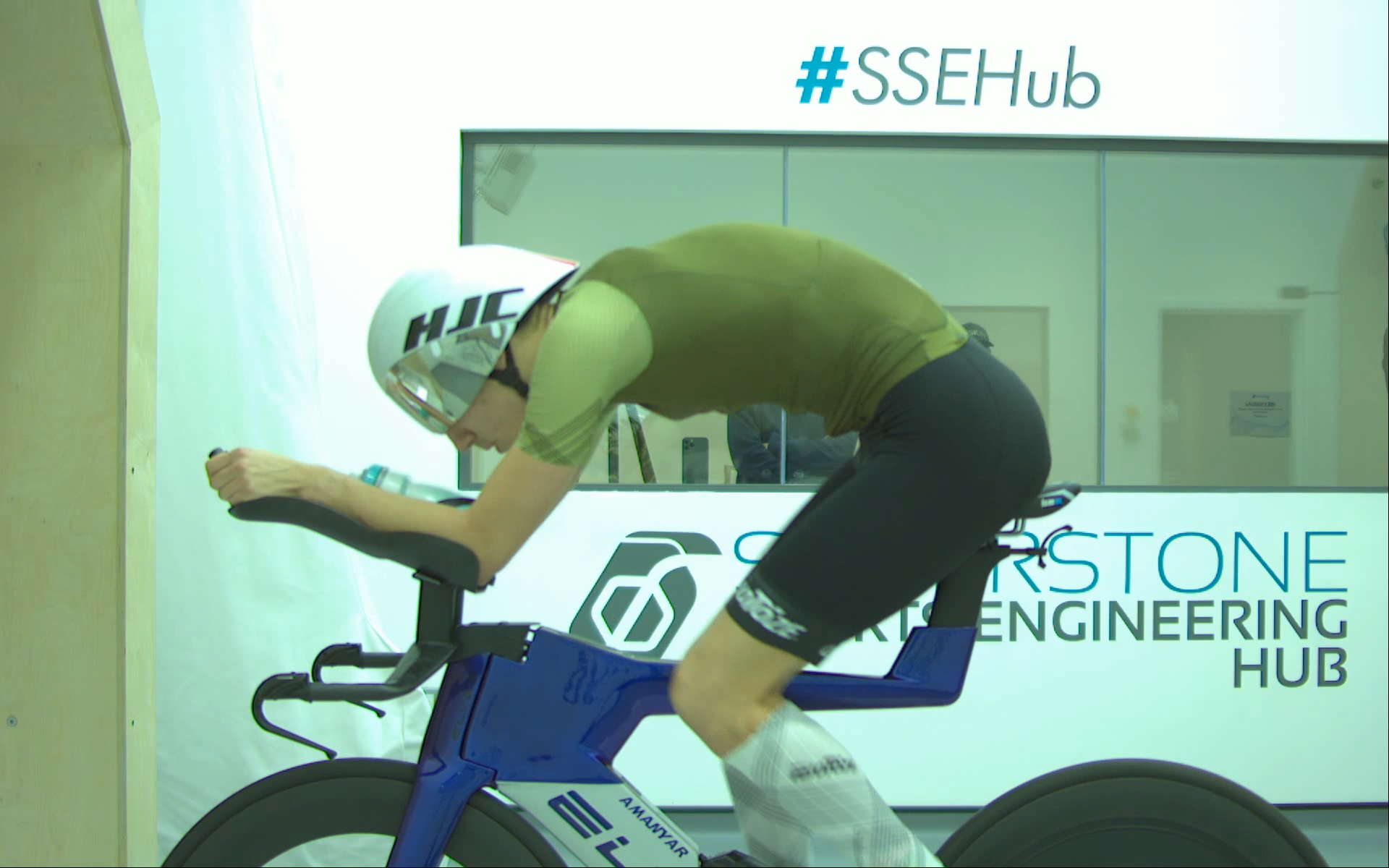

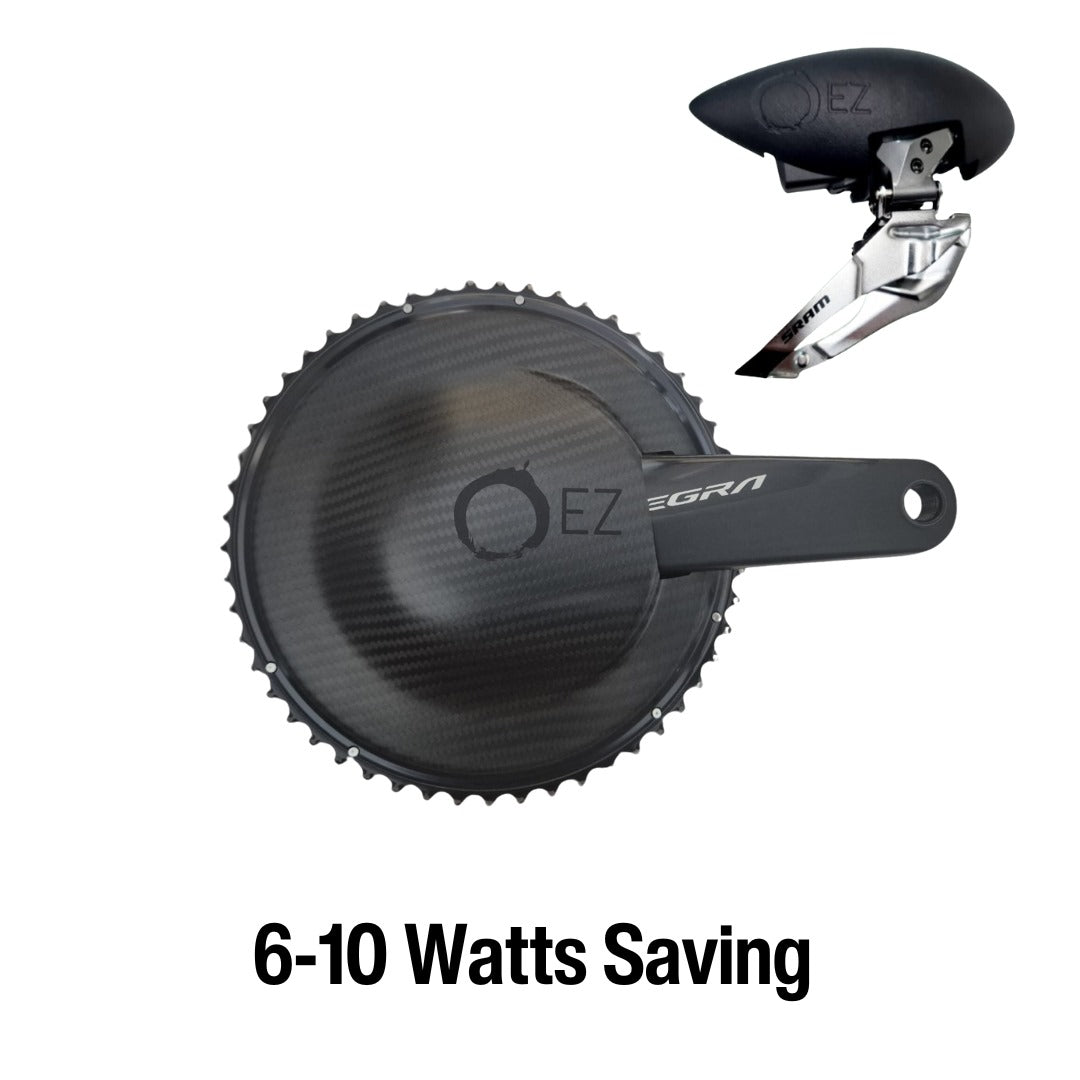
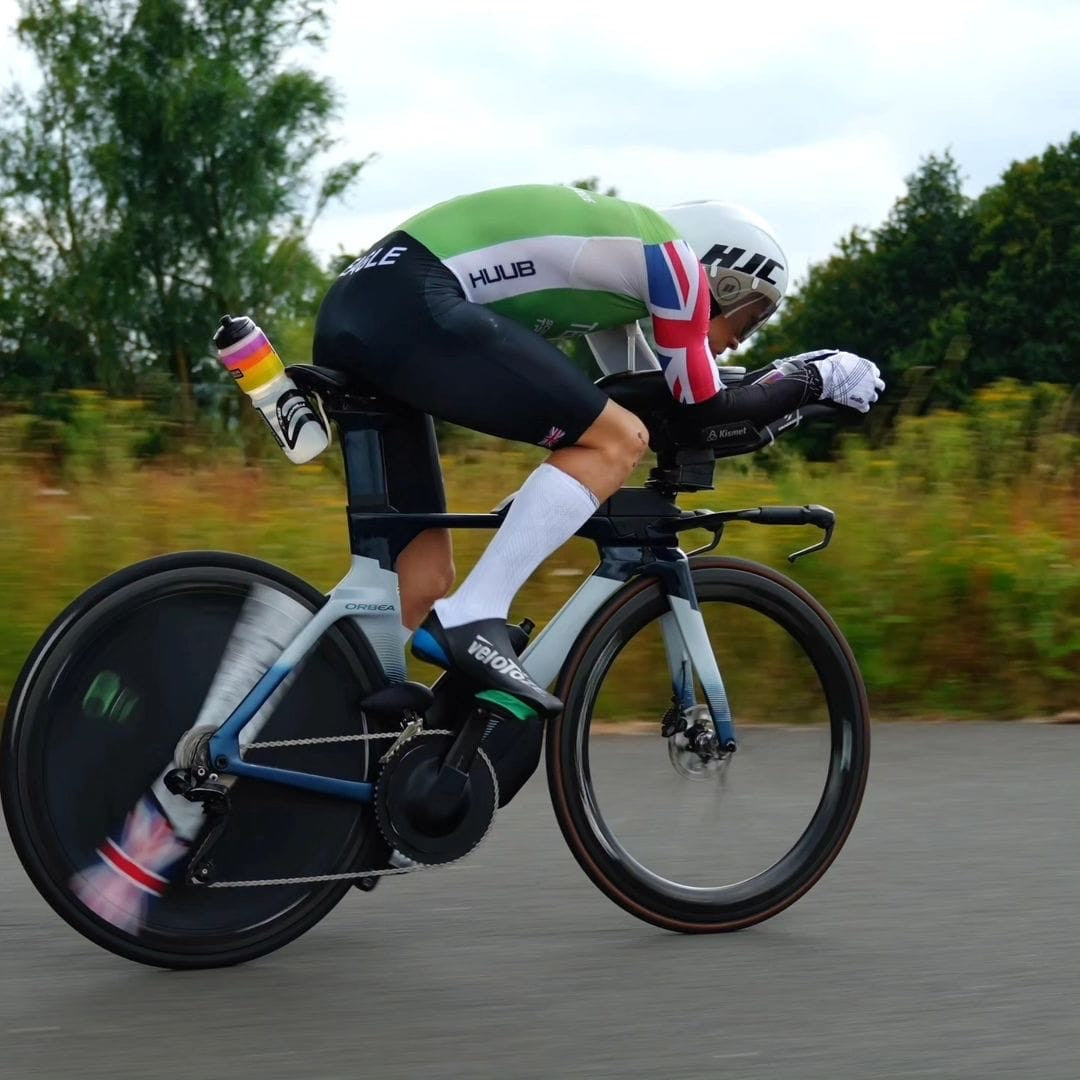
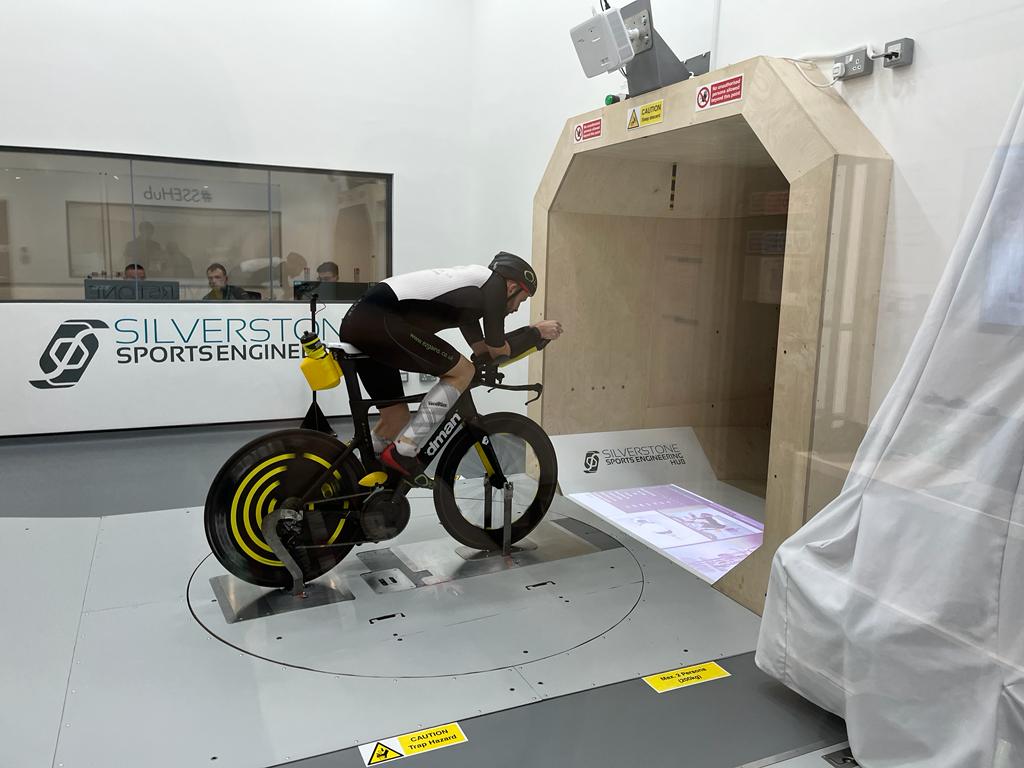
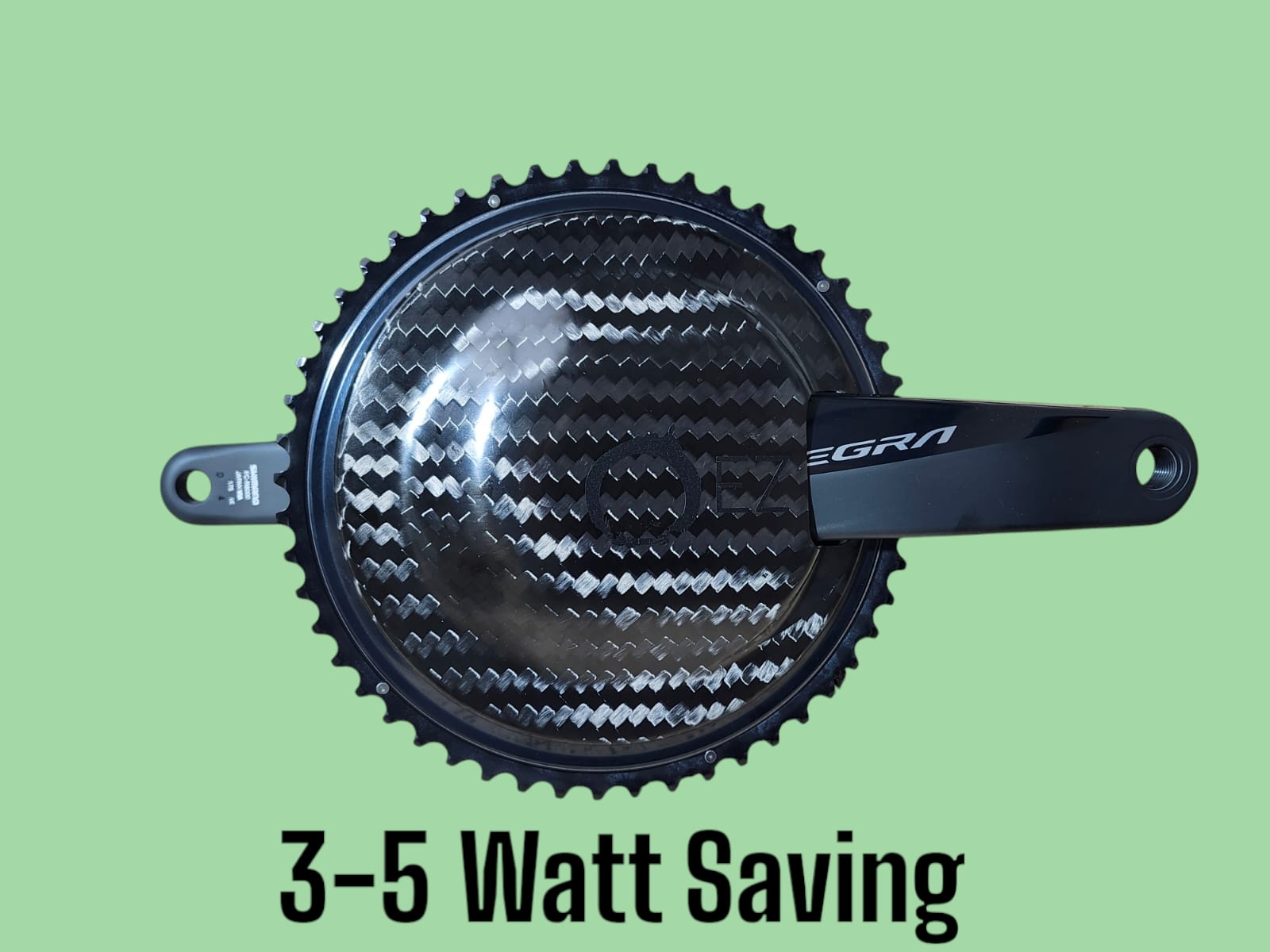



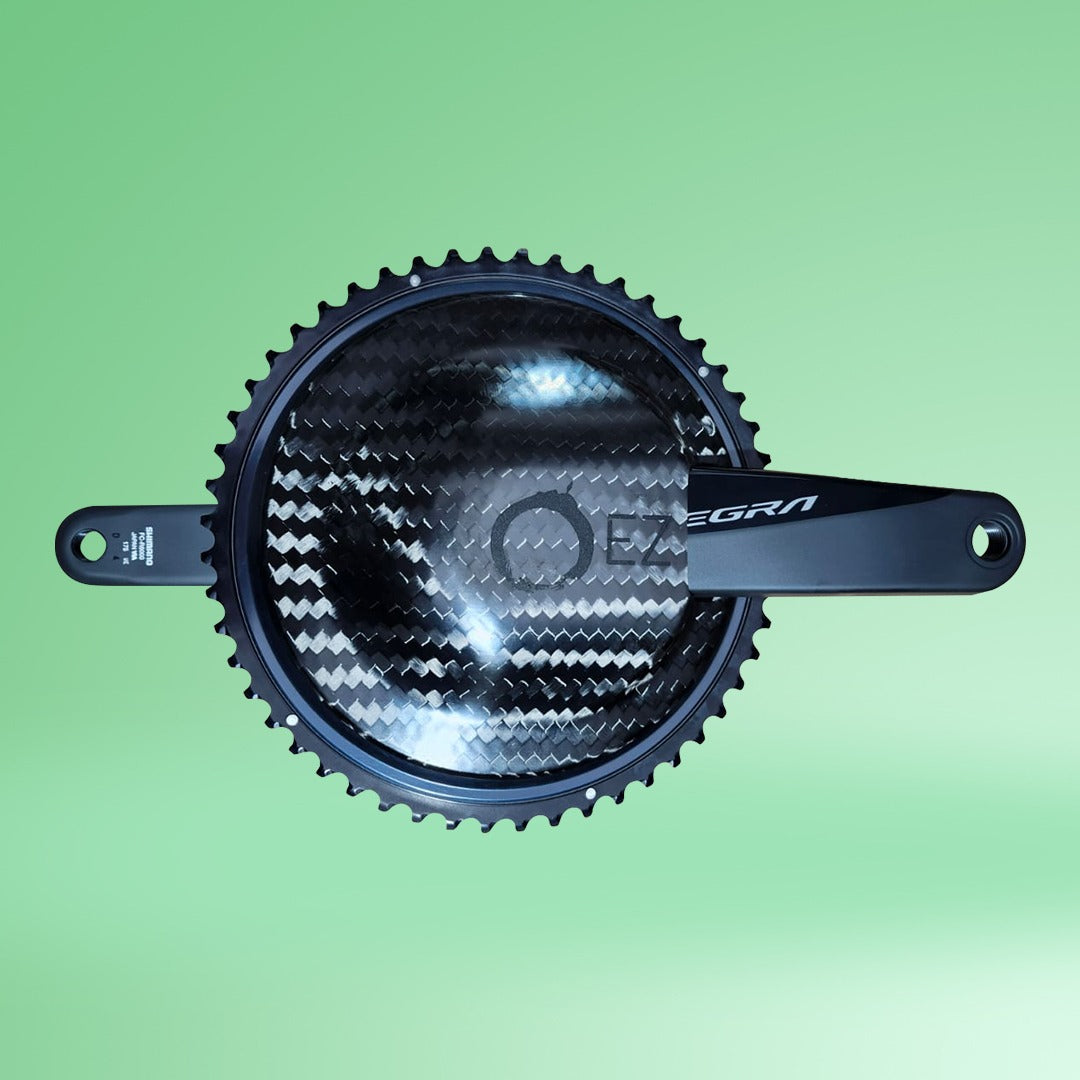
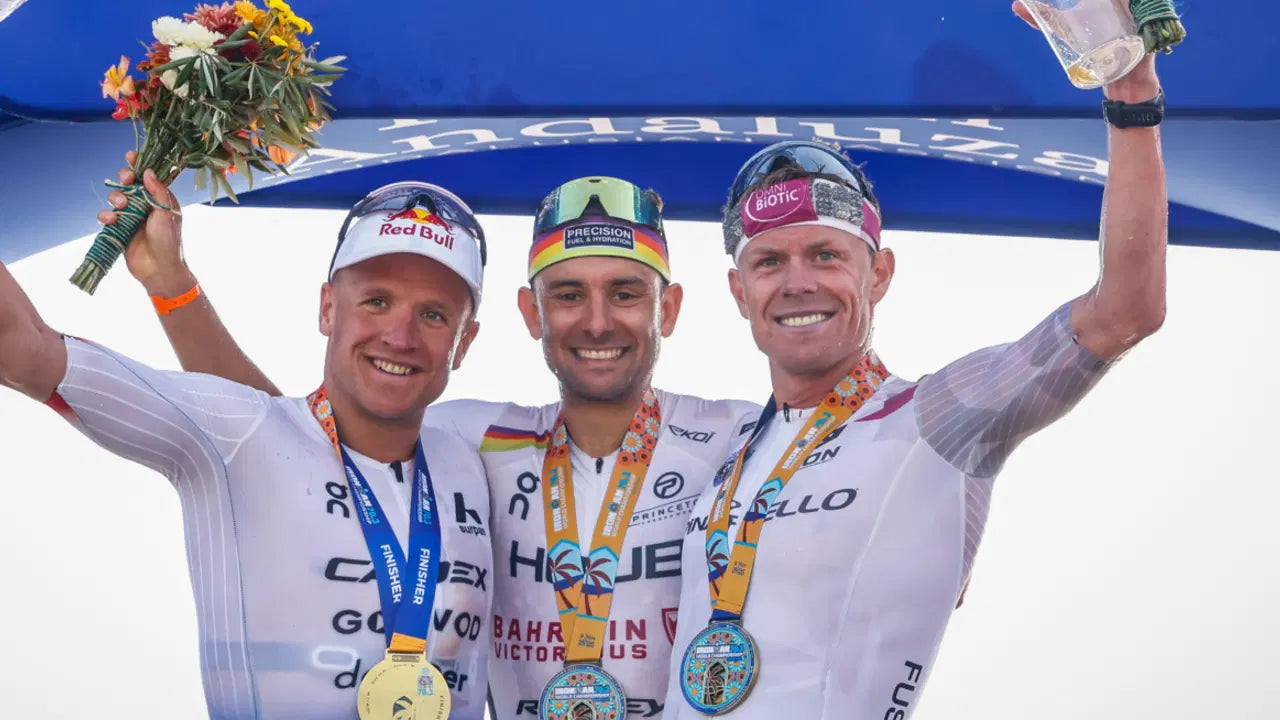


Share:
NEW EZ Disc SL “Super Lite”
What Watts? Wind Tunnel Testing 2024